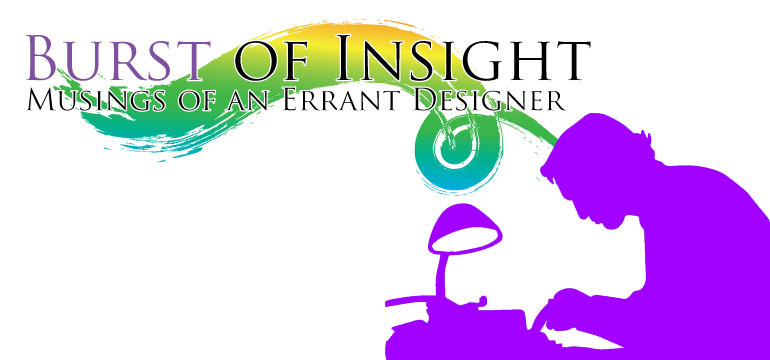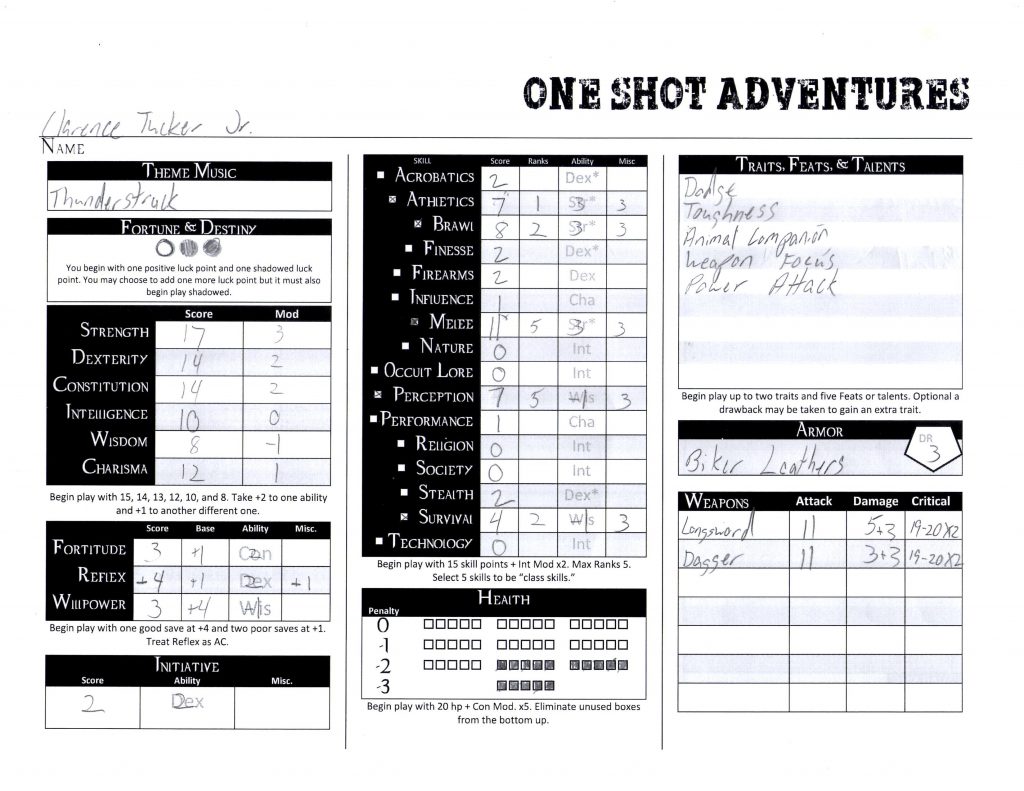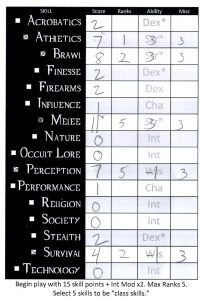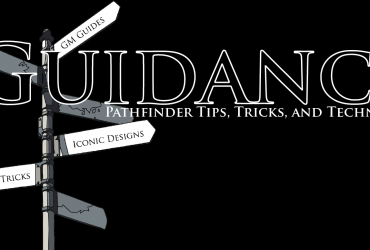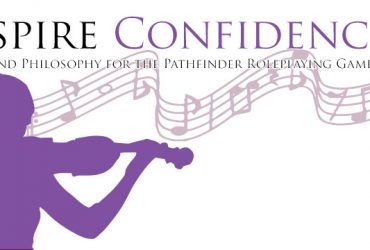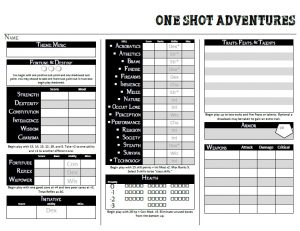 |
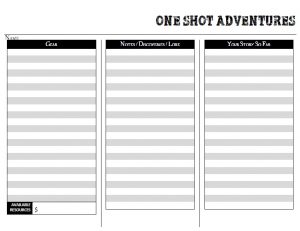 |
Two weeks ago I talked about how character sheets can function as a map to a game system and to a lesser degree how a character sheet can function as an outline for a designer. At the end of my post, I included a character sheet draft for a modern one shot game based loosely on the T.V. series Supernatural. Today, the day after Halloween seems like a great time to detail the basic mechanics of a possible Supernatural one-shot or limited campaign. So using an updated character sheet as an outline let’s look into this idea.
If you have been a regular reader of this blog you’ll certainly recognize a number of the concepts worked into the implied ruleset of this character sheet (a previous post on kitbashing Supernatural). Before we get to those, however, I should point out this sheet has many rules notations for making your character right on it. This was to speed up character generation. Characters for a one night or limited run game should either be pre-generated or easy to get into play. So, I have designed the sheet to get everyone playing fast.
In preparation for writing this post and actually running a Supernatural-esque game at my table, I had one of my players sit down and knock-out a character. Chris had his PC Clarence Tucker Jr. mostly statted up in about 10 or 15 minutes with almost no additional explanation from me.
You probably noticed this sheet has a line for your character’s name but not one for race, class, or level instead there is a spot for your theme music (I’ll cover that in more detail later in this post). You might wonder what Fortune and Destiny are but the six attributes are familiar as are the three saves. The skill list is clearly shortened and it has some unusual entries including Brawl, Firearms, Melee, Occult Lore, and Technology. Health certainly differs from hit points. As there are tick boxes and penalties. Traits, Feats, & Talents probably seems pretty familiar and Armor and Weapons probably look a little simplified. So a fair bit has changed but not so much that the core of the sheet is incoherent.
Beginning with the familiar let’s look at the Attributes and Saving Throws. Each character begins with the same array of attributes (15,14,13,12,10, and 8) but they may add 2 to one score and +1 to a different score. Mechanically this is similar to the typical human ability boost as well as a single level adjustment for a 4th level character. With saves, the player may select one good save to be a +4 and two poor saves to be +1 which should also be a fairly familiar progression.
Two variant rules we will be using are implied by a notation under the saving throws. First, Reflex is going to pull double duty as both a saving throw and “AC”. Second, Players roll all the dice. So when your PC is attacked you’ll roll your reflex to avoid getting hit. This increases the importance of the reflex save so it is one of the riskier variations I’m testing in these rules. My theory is that in a one-off or limited series game this shift in balance won’t be too disruptive.
So now we come to skills. We’ll be using the consolidated skills rules from Pathfinder Unchained but I’ve added a few new skills to the mix adjusting the total skills from 12 to 16. Technology is a pretty self-explanatory knowledge type skill. The ones that probably need more explanation are the combat skills: Brawl, Firearms, and Melee. What I’ve done for this is to dispose of the Base Attack bonus and replace each basic attack type with a skill roll. This has been executed successfully in a number of other game systems. And I’m not worried too much about the disruption that a high attack score might offer because magic weapons will be exceptionally rare and we won’t be using iterative attacks.
Melee and Firearms also determine what weapons you are proficient in. Each rank in Melee grants you proficiency with a single fighter weapon group while each rank in Firearms grants you Proficiency with a single type of firearm: Pistol (revolvers & automatics), Rifle, Shotgun, Assault Rifle, Heavy Weapons, and Archaic Firearms. Firearms skill also encompasses other aimed weapons instead of learning a single type of firearm a character could learn a ranged fighter weapon group such as bows or crossbows. Thrown weapons despite being ranged attacks use Melee.
Brawl doesn’t offer any extra proficiencies or feats but does stand in for the character’s CMB for attempting most combat maneuvers in addition to being the Skill used to punch someone. CMD will be resolved either as a Reflex or a Brawl roll at the GM’s discretion.
Traits, Feats, and Talents are the area where things get trickiest. For the purposes of this mini-game, a talent is a single first through 5th level class ability. Typically, if the ability scales it must be taken more than once to get the effect of it scaling. For example, if a character wants sneak attack +2d6 they must take sneak attack as two of their five feats or talents. If a feat, however (such as Toughness) scales with level treat the character’s level as 5th. Not every class feature is made equally powerful and some feats may not function as originally intended thank tot the tinkering elsewhere. So, As a GM you may find that you’ll want to veto some options or redirect to more balanced choices.
The sections for Weapons and Armor have both been significantly shortened. Each character can begin with a reasonable amount of gear. A few weapons, a single suit of appropriate armor if they’d like. A vehicle, false identities, a phone, maybe a laptop or iPad and a couple of hundred dollars cash.
The rules for Armor as Damage Reduction are in effect. And that is the only detail tracked on this portion of the character sheet. The armor check penalty is just added to the miscellaneous column of the skill table (ACP for this game also applies to Brawl, Firearms, and Melee). The DR value of any armor is the AC + 1. Feel free to reskin armors to modern equivalents. A leather jacket or biker leathers might replace leather or studded leather armor while a chain shirt or breastplate might stand in for a Kevlar vest or military tactical armor. If a character’s armor reduces the damage to 0 or less the target instead takes a point of nonlethal damage.
Weapons will be using static damage equal to the die average rounded up. A weapon that inflicts 1d8 will deal 5 points of damage, d6 4 pts, d4 3 points. Weapons that inflict multiple dice have the multiple dice averaged first and rounded if necessary a greatsword, for example, would inflict 7 points of damage. Ranged weapons add your Dexterity modifier to damage and melee weapons add your Strength. Thrown weapons add whichever is better. For firearms damage, I could use the normal Pathfinder rules but I have this 3rd era book I love Ultramodern Firearms by Charles Ryan that we’ll use instead.
Finally, we start to come to the finishing touches. Players should record their health by filling in the health boxes they will not need starting from the bottom. During play wounds will be marked with an “X” and non-lethal damage will be marked with a “\” if a character ticks off enough boxes with either lethal or non-lethal damage they may start incurring wound penalties. Wound penalties apply to any d20 roll the character needs to make including Reflex saves to avoid more damage. Getting hurt in this variant system can be bad news fast.
Monster hunters have all the luck. Good and bad. Mostly bad. You begin play with one positive luck and at least one shadowed luck point under the header of Fate and Destiny. You may change a positive luck to a shadowed luck to roll an additional d20 and take the better result. The GM may add a narrative complication or make you roll an additional d20 and take the worse result by flipping a shadowed luck point to a positive luck point. You or the GM may cancel an effect by changing a luck point. This is pretty much the same optional rule I detailed in my August 9th blog (Inspiration From Outside of Pathfinder) except each character has its own pool.
The Theme Music header is largely for atmosphere and flavor but if you play with a playlist soundtrack every time the character’s theme comes on all of their shadowed luck converts automatically back to positive luck. This is an idea I have shamelessly stolen from the story of a Supernatural game LJ Stephens (of Rogue Genius Games) once ran.
All you need now is your name and Your Story So Far then you can get to the job: Saving people, hunting things.

